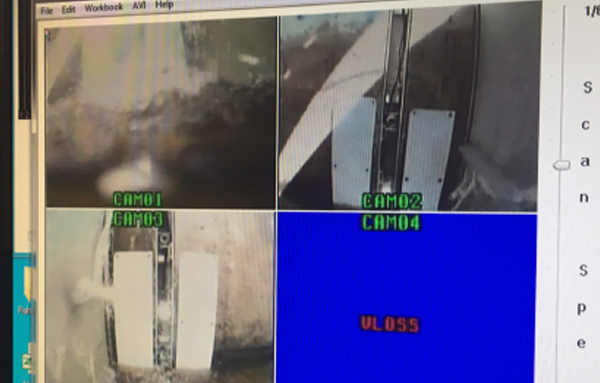Menominee Fish Passage Monitoring

Decreasing populations has elevated the Lake Sturgeon to a species of special concern in the Great Lakes region. The installation of upstream and downstream fish passage at the Menominee Project, consisting of the Menominee and Park Mills Dams which are the first two dams on the Menominee River, was initiated to allowed Lake Sturgeon to access historic spawning grounds. Fish passage monitoring was prescribed at the Project to assess fish passage effectiveness.
Kleinschmidt was hired by the Partnership (River Alliance of Wisconsin, U.S. Fish and Wildlife Service, the natural resource agencies of Michigan and Wisconsin, and Eagle Creek Renewable Energy) to investigate the feasibility of using video monitoring technology to achieve downstream fish passage monitoring goals. Based on the results of the feasibility assessment, the Partnership decided to move forward with the full implementation of video monitoring technologies at the dams. Our design included a durable, industrial-grade frame, video cameras, and lights that are recessed within concrete slots protected from debris and that have a minimal effect on the flume hydraulics. The three-piece array is light enough for a single person to be able to deploy and retrieve the system. Three cameras and two lights were deployed in two slots at each dam to achieve high-quality video images of the full cross-sectional area of the narrow bypass flume for nearly 100% monitoring coverage. The camera system was paired with video capture software designed to record fishes via motion sensing.
The implementation and installation of fish monitoring technology at the Menominee and Park Mills Dams achieved the goals of the Partnership by providing a robust system that could be deployed seasonally by a single person to provide around-the-clock video monitoring of downstream fish passage at the dams. The motion-sensing technology minimizes video storage requirements and data review effort. On-site project staff was trained on the system used to minimize the need for outside support and video data are archived for convenience such that data could be reviewed from any computer via an external video storage device.
